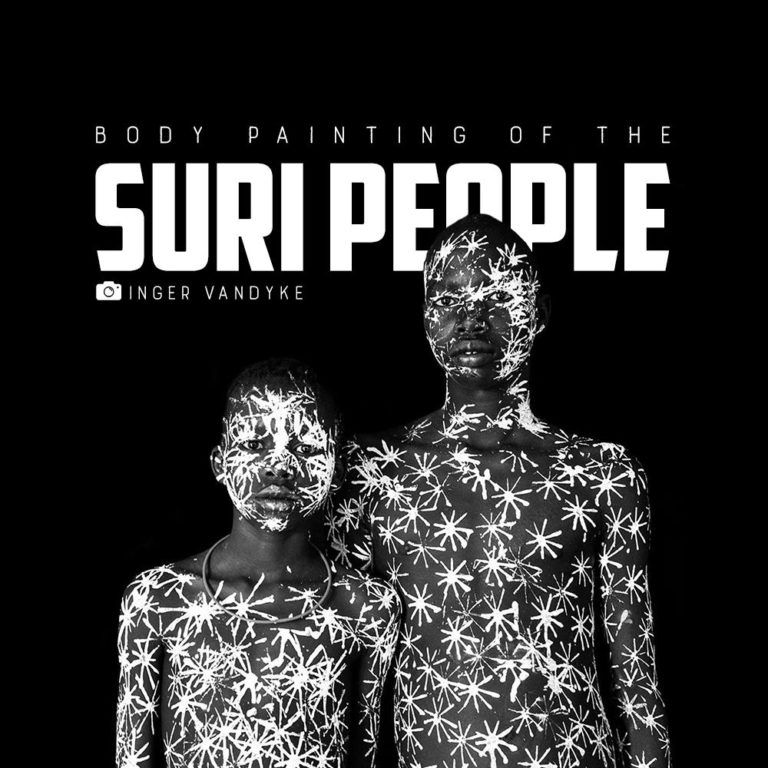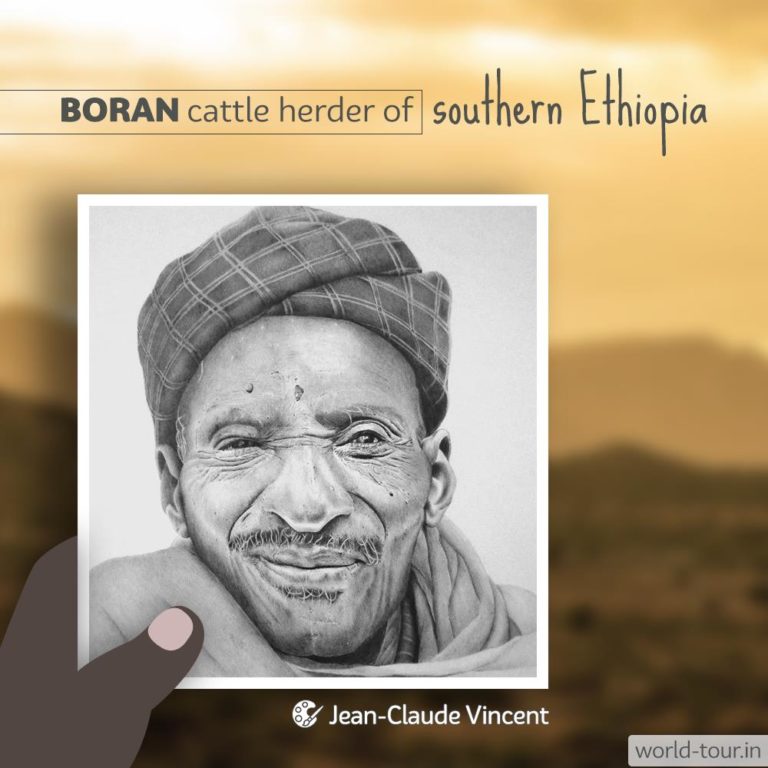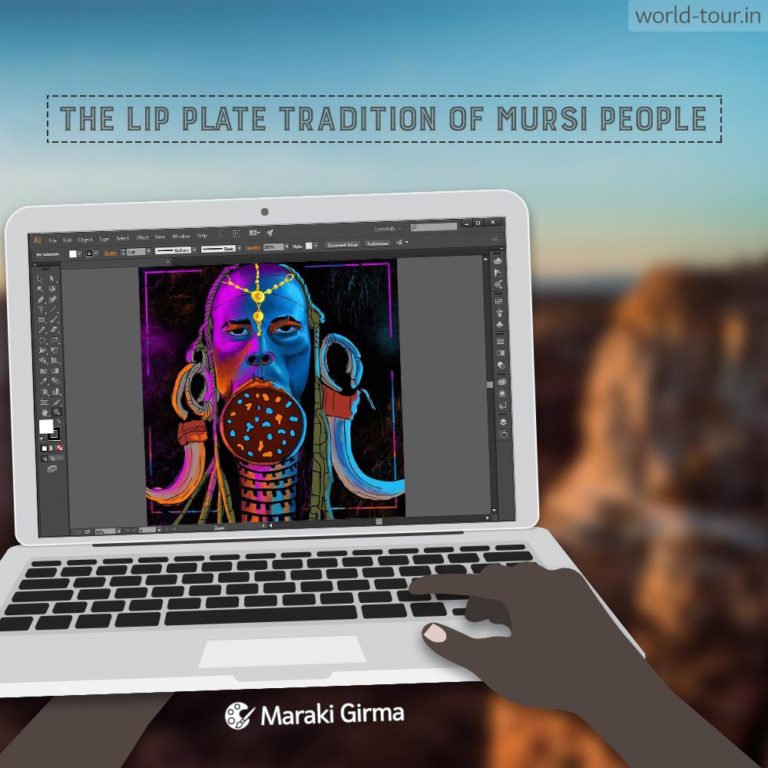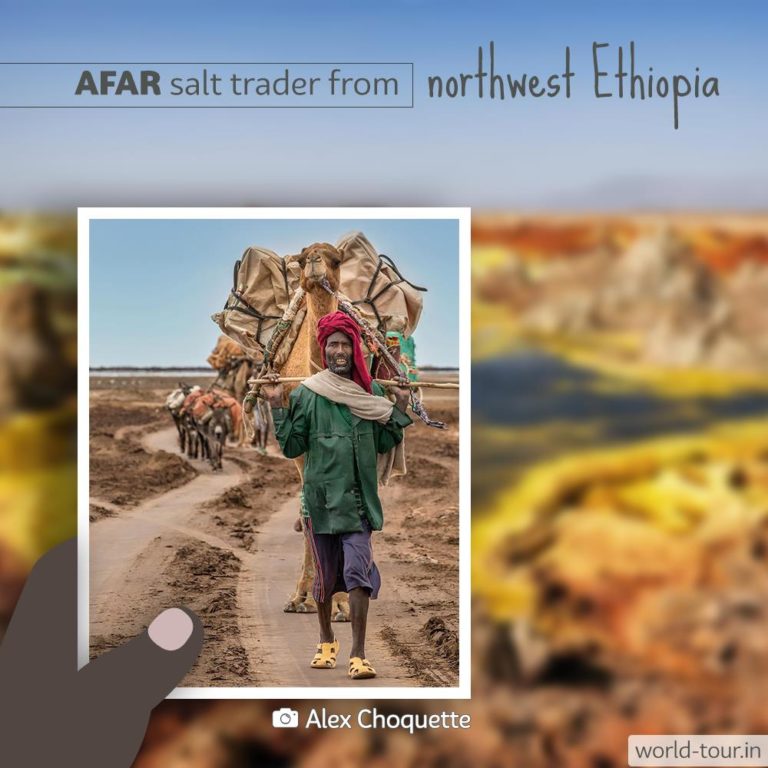The extraordinarily diverse country of Ethiopia is home to over 80 different ethnic groups, many of which are some of the last true tribal people of Africa. Each of these tribes have unique ways of life, traditions and rituals. Today, we will showcase the lives and traditions of these extraordinary people, who live in some of the most isolated, but also some of the most beautiful parts of Ethiopia. Many of these tribes are found in southwestern Ethiopia in a region known as Omo Valley.

– story and photo of painted Suri boys by explorer and photographer, Inger Vandyke
The Suri are the largest ethnic group of three similar tribes who are collectively called the Surma and have retained much of their historical appearance and lifestyle. They inhabit the mountains of the Great Rift Valley in the plains of south-western Ethiopia and pride themselves on the scars they carry on their bodies.
“This is a picture depicting the practice of twinning in Suri children. Suri children start to learn the art of body painting at around the age of four. They start off with simplistic designs like flowers, circles and stars and as they get older, they learn more intricate designs. If they are inseparable friends, as children often are, they like to decorate each other with matching designs, such as spots that echo the plumage of the guinea fowl. This practice of creating twinned designs is also found among adolescent girls and even young couples who are attracted to each other.”
Inger Vandyke is an awarded explorer and photographer, who specialises in coverage of some of the world’s most remote and isolated places.

– Pencil sketch of Satu, a Boran man from Ethiopia, by Jean-Claude Vincent
This is Satu, a 66-year-old cattle herder, who has always lived to the rhythm of droughts but suffers from their intensification. In this part of Ethiopia, the rains are rare – barely 300 mm per year – and are distributed only during a short rainy season. Most of the year, it never rains; the drought is endless; the grass is roasted.
“The semi-arid lands of southern Ethiopia are the exclusive territory of the Borana people who have managed to tame this hostile environment. The Boranas, considered to have come from the purest and oldest line of the peoples of Ethiopia, have managed to maintain an ancestral traditional way of life. They remained steadfast semi-nomadic pastoralists, dependent exclusively for their subsistence on their herds of cattle.”
Jean-Claude Vincent is a 67-year old artist from Theux, Belgium who draws portraits because he believes that they tell stories about life’s past, and sometimes future.

– illustration of Mursi woman by Maraki Girma, a painter and digital artist from Addis Ababa, Ethiopia
The Mursi people, whose population is estimated at around 5,000, live in the lower Omo valley, in southwest Ethiopia. Due to the climate, the Mursis move twice a year between the winter and summer months. They are primarily pastoralists (nomadic people who move with their herds), who gather cattle and grow crops along the banks of the Omo River.
“The Mursi are known for their lip plate tradition in which an unmarried woman’s lower lip will be pierced and then progressively stretched. A clay disc, with soft rims is squeezed in the lip. As it stretches, ever-larger discs are forced in until the lip, now a loop, is so long it can sometimes be pulled right over the owner’s head. The size of the lip plate determines the bride price, with a large one bringing in fifty heads of cattle, although this is disputed by some. The women make the lip plates from clay, color them with ochre and charcoal, and bake them in a fire.”

– photo of Afar man by Montreal based photographer Alex Choquette
The Danakil Depression is a desert area in the Afar region of northeastern Ethiopia. It is one of the hottest places on Earth, as well as one of its lowest, at 100 metres below sea level. All the water entering Danakil evaporates, and no streams flow out from its extreme environment. It is covered with more than one million tonnes of salt.
“Each day at Danakil depression, Afar miners chop salt from the earth under a blistering sun, then load the minerals on to camels and donkeys which march for days to market towns to the west where the mineral is sold. The region being a contender for the hottest place on Earth, you would not think anyone could live here, but the Afar people have made it their home. This is evolution at work. Their bodies are adapted to the heat and dryness, so they need far less food and water than most other people.”
Follow our blog for your daily dose of travel inspiration, information and tips. We try to publish atleast one article each day. Check this space for all the latest posts.